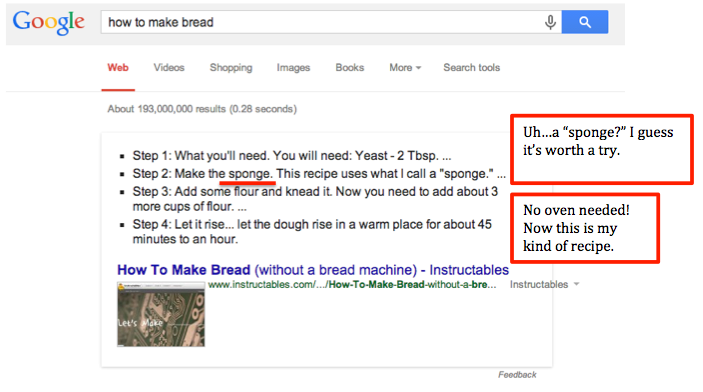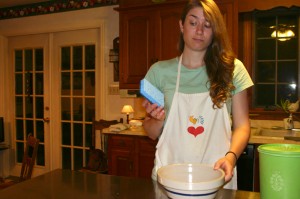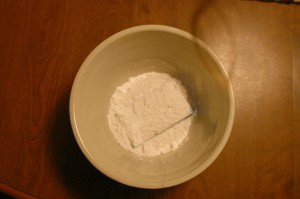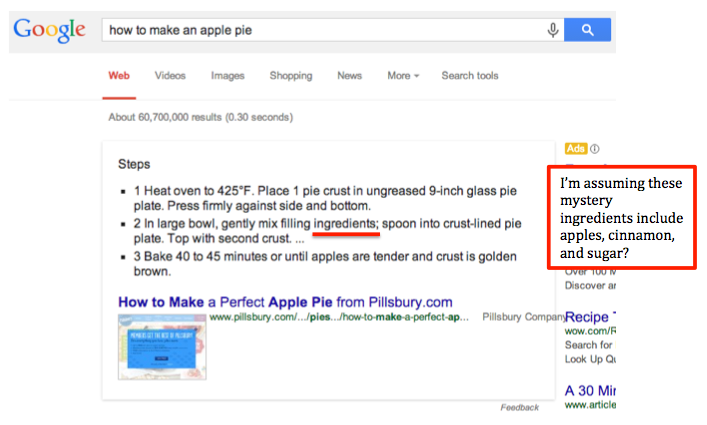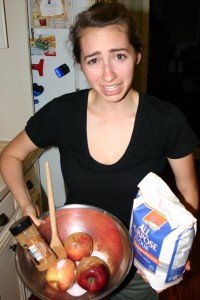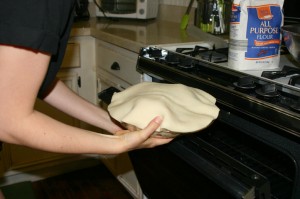Don’t you just love the taste of freshly baked bread? How about the little puff of steam that floats into the air when you slice a warm dinner roll? Mmmm. Delish, right? Unfortunately for those living in my home, I have no idea how to make bread that doesn’t come out of the freezer section at my grocery store. So when it came time for me to acquire such a domestic skill, naturally I turned to Google. However, the instructions I found at the top of the results page left me with a flour-covered sponge – Julia Child would not have approved, and neither would my dinner guests.
Google is After Your ‘How-To’ Traffic
I recently read an article by Ashley Zeckman on Search Engine Watch that discusses how Google is expanding their knowledge graph to include step-by-step instructions for popular “how-to” queries. As Zeckman predicts, this expansion will cause many businesses to lose organic search traffic because users will have no reason to click through to the business’s website if a satisfactory answer is provided directly on the results page.
As I continued reading Zeckman’s article, I started testing out a few search queries myself. What I found, of course, was exactly what she had described. Google is not actually creating the instructions themselves. Why would they? Instead, they are pulling information from one of the popular sites shown in organic search results. In most cases, the source is also the number one result. But for some queries, the source Google pulls from is number two, three, or even eight.
Putting It to the Test
What I found to be most interesting were the instructions shown in the knowledge graph itself: piecemeal of the original publisher’s hard work. When I searched “how to make bread,” I saw four steps describing how I was to go about the process. I was disappointed to see that these four steps were far from complete instructions, and I knew that my search for an effective recipe would have to continue. However, in the name of good fun – and to prove a point – I decided to follow Google’s instructions for the homemade bread, putting it through a sort of “Amelia Bedelia” test.
Instructions…
Expectation…
Reality…oh, how harsh it is.
Still a bit confused by the whole “sponge” thing.
Jamie Oliver’s producers are now in contact with me about filming a new baking show. Yep.
Hoping these results were just a fluke, Caitlin and I decided to try one of Zeckman’s examples. We searched “how to make an apple pie” and followed the instructions.
Instructions…
Expectation…
Reality…nailed it!
Again, it seems that something is missing from these instructions.
What It Means for Your Traffic
As the Search Engine Land article points out, publishers are not upset that Google is displaying their information. I mean, who wouldn’t want to show up TWICE on the first page of results. Zeckman poses the problem to be that users now have little reason to click through to the publisher’s site. I absolutely agree with this. But I think there is another big problem these publishers are facing, and that is the loss of credibility.
If you are lucky enough to have your information chosen as Google’s “how-to” source, you don’t get to choose how they display your instructions. In most cases, the steps shown are broad and incomplete. Google includes ellipses but no real prompt to select the publisher’s link. When your website is included as the source for such information, a user could assume that your explanation is just as unhelpful as what Google displays. So why bother clicking through to it? There goes that credibility you worked so hard to establish. Meanwhile, the competitors shown just beneath you in the SERPs could be experiencing a jump in traffic from users who are still in need of answers.
Of course, these “how-to” search results will need to be monitored over time to determine whether or not my speculations are on point. But it will be interesting to see if the number two and three search results will get a boost in traffic from users who are put off by Google’s initial directions.

